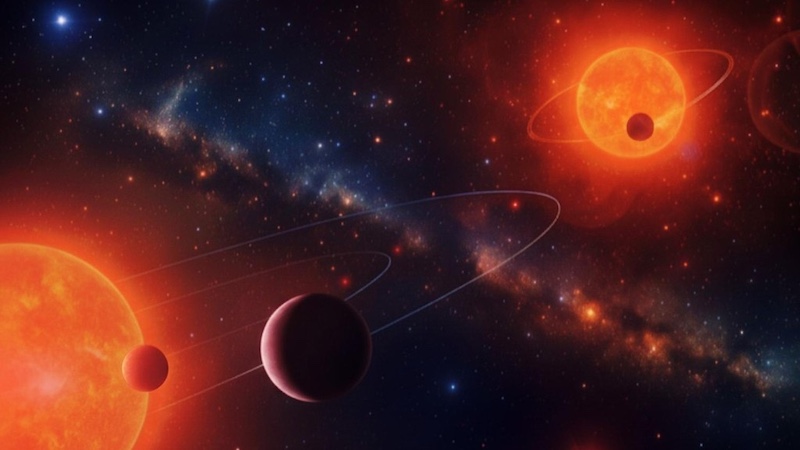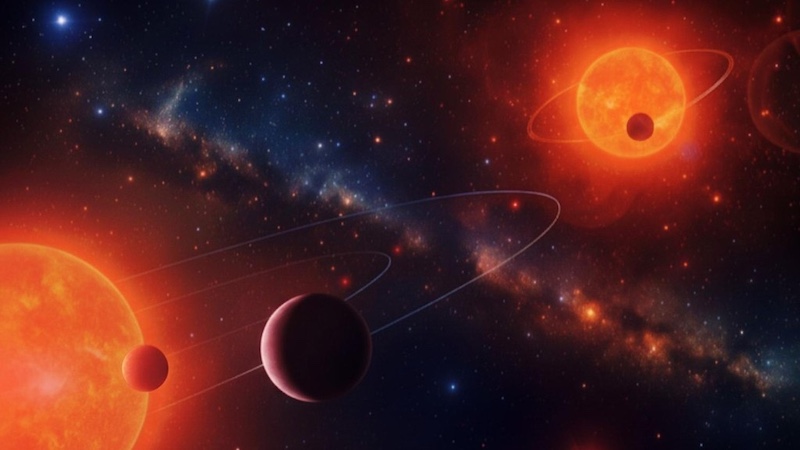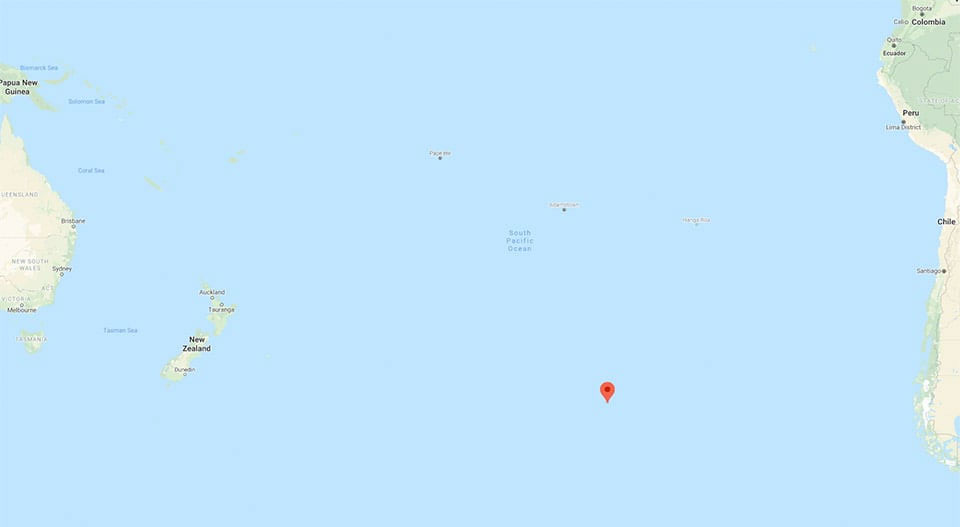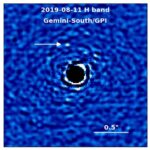Now Reading: 3 Earth-sized planets around double star surprise scientists
-
01
3 Earth-sized planets around double star surprise scientists
3 Earth-sized planets around double star surprise scientists


- TOI-2267 is a binary star system about 190 light-years from Earth. Both stars are red dwarfs and closely orbit each other.
- Astronomers found three Earth-sized exoplanets in the TOI-2267 system. Two of them orbit one star and the 3rd one orbits the other star.
- It’s the first binary system known to have planets orbiting each of the stars individually.
3 Earth-sized planets
Astronomers know that planets can exist in double – or binary – star systems, where two stars orbit each other. Typically, the planets orbit either one of the stars or loop around both in a larger orbit. But on October 24, 2025, an international team of researchers, led by the University of Liège in Belgium, said it’s discovered a new type of binary star planetary system. The researchers found three Earth-sized planets in the TOI-2267 system, 190 light-years away. Two of the planets orbit one of the stars, and the third planet orbits the second star.
This is the first time astronomers have found planets orbiting each of the individual stars in a compact binary star system. The two stars loop around each other closely in tight orbits. This can make planetary formation difficult. But apparently not impossible.
The peer-reviewed details of the discovery were published in Astronomy & Astrophysics on October 24, 2025.
Three Earth-sized planets have been identified in the compact binary system TOI-2267, marking the first known case of transiting planets orbiting both stars in a double-star system. doi.org/g97zf4
— Science X / Phys.org (@sciencex.bsky.social) 2025-10-24T12:33:14-04:00
3 planets and 2 stars
TOI-2267 is now the first binary star system known to have planets orbiting each of its stars individually. Lead author Sebastián Zúñiga-Fernández at the University of Liège said:
Our analysis shows a unique planetary arrangement: two planets are transiting one star, and the 3rd is transiting its companion star. This makes TOI-2267 the first binary system known to host transiting planets around both of its stars.
The two stars closely orbit each other, making it what astronomers call a compact binary. Generally, astronomers consider these systems to be too gravitationally unstable for planets. So the discovery of three planets orbiting both stars is a surprise. Co-author Francisco J. Pozuelos at Instituto de Astrofísica de Andalucía (IAA-CSIC) added:
Our discovery breaks several records, as it is the most compact and coldest pair of stars with planets known, and it is also the 1st in which planets have been recorded transiting around both components.

Testing planetary formation models
Since scientists consider it unlikely for planets to form in such compact binary star systems, the discovery of three planets in this one surprised the researchers. As such, it provides a chance for astronomers to reevaluate and test their planetary formation models. As Zúñiga-Fernández explained:
Discovering three Earth-sized planets in such a compact binary system is a unique opportunity. It allows us to test the limits of planet formation models in complex environments and to better understand the diversity of possible planetary architectures in our galaxy.
Pozuelos said:
This system is a true natural laboratory for understanding how rocky planets can emerge and survive under extreme dynamical conditions, where we previously thought their stability would be compromised.
A collaborative effort
As is typically the case, finding smaller planets the size of Earth around distant stars is not an easy task. With this in mind, the discovery of the TOI-2267 planets required collaboration between various researchers and telescopes.
The initial data came from NASA’s Transiting Exoplanet Survey Satellite (TESS) space telescope. Researchers at University of Liège IAA-CSIC then used their own software, called SHERLOCK, to analyze the data. The Search for habitable Planets EClipsing ULtra-cOOl Stars (SPECULOOS) and TRAPPIST telescopes also played a primary role in the subsequent confirmation of the planets. Additional confirmation came from other ground-based telescopes.

Further observations
Finding three Earth-sized planets in one planetary system is exciting. It brings to mind the now-famous TRAPPIST-1 planetary system, which has no less than seven Earth-sized worlds. So, could any other planets of TOI-2267 be habitable? We don’t know yet.
But they will be an excellent target for the James Webb Space Telescope and other future telescopes. Those kinds of telescopes will be able to study the masses, densities and perhaps even the atmospheres of them. It will be interesting to see what they find!
Bottom line: Astronomers discovered three Earth-sized planets in the binary star system TOI-2267. It’s the first time where the planets are orbiting each individual star.
Read more: Can binary-star planets support life?
Read more: Analyzing binary stars with AI brings new insights
The post 3 Earth-sized planets around double star surprise scientists first appeared on EarthSky.
Stay Informed With the Latest & Most Important News
Previous Post
Next Post
-
 012024 in Review: Highlights from NASA in Silicon Valley
012024 in Review: Highlights from NASA in Silicon Valley -
 02Panasonic Leica Summilux DG 15mm f/1.7 ASPH review
02Panasonic Leica Summilux DG 15mm f/1.7 ASPH review -
 03From Polymerization-Enabled Folding and Assembly to Chemical Evolution: Key Processes for Emergence of Functional Polymers in the Origin of Life
03From Polymerization-Enabled Folding and Assembly to Chemical Evolution: Key Processes for Emergence of Functional Polymers in the Origin of Life -
 04How New NASA, India Earth Satellite NISAR Will See Earth
04How New NASA, India Earth Satellite NISAR Will See Earth -
 05And Thus Begins A New Year For Life On Earth
05And Thus Begins A New Year For Life On Earth -
 06Astronomy Activation Ambassadors: A New Era
06Astronomy Activation Ambassadors: A New Era -
07SpaceX launch surge helps set new global launch record in 2024




















